
Question Number 80809 by mr W last updated on 06/Feb/20
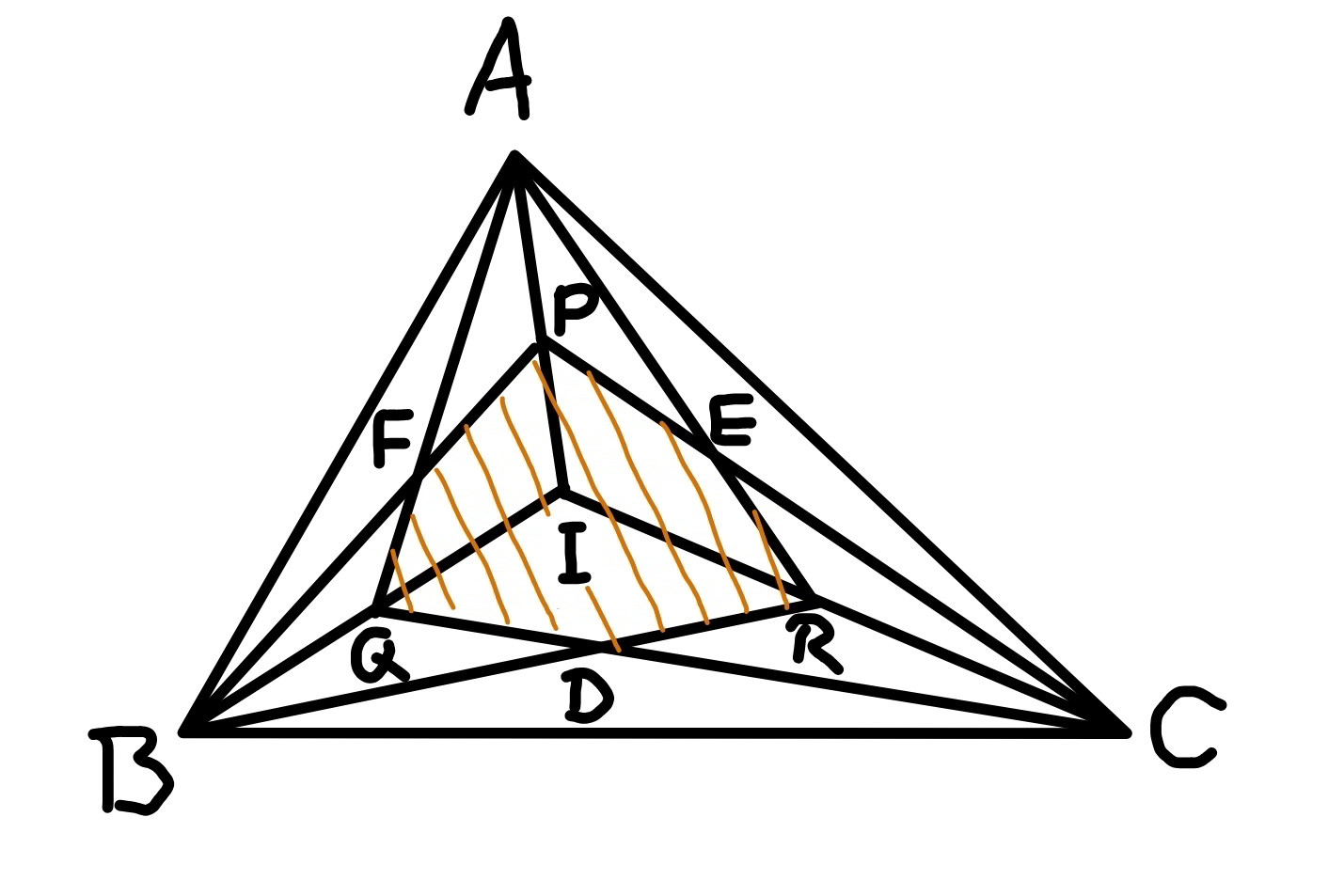
Commented by mr W last updated on 06/Feb/20
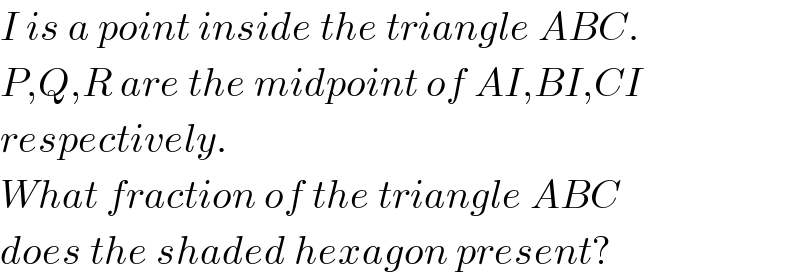
$${I}\:{is}\:{a}\:{point}\:{inside}\:{the}\:{triangle}\:{ABC}. \\ $$$${P},{Q},{R}\:{are}\:{the}\:{midpoint}\:{of}\:{AI},{BI},{CI} \\ $$$${respectively}. \\ $$$${What}\:{fraction}\:{of}\:{the}\:{triangle}\:{ABC} \\ $$$${does}\:{the}\:{shaded}\:{hexagon}\:{present}? \\ $$
Commented by ajfour last updated on 07/Feb/20
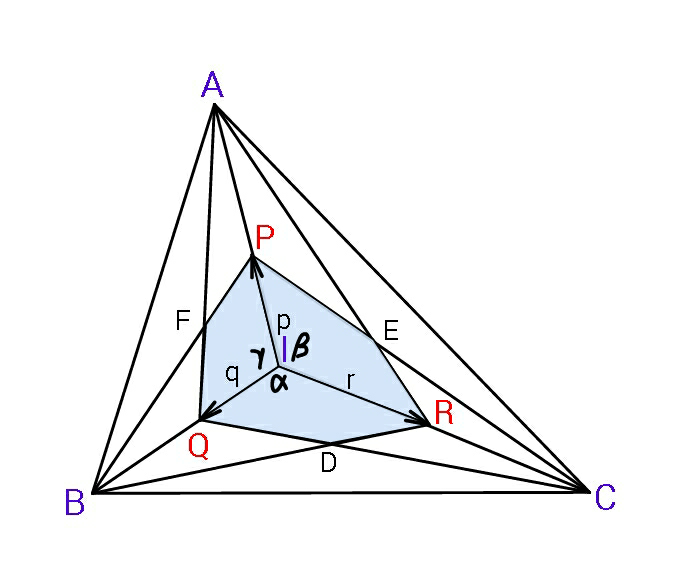
Commented by ajfour last updated on 07/Feb/20
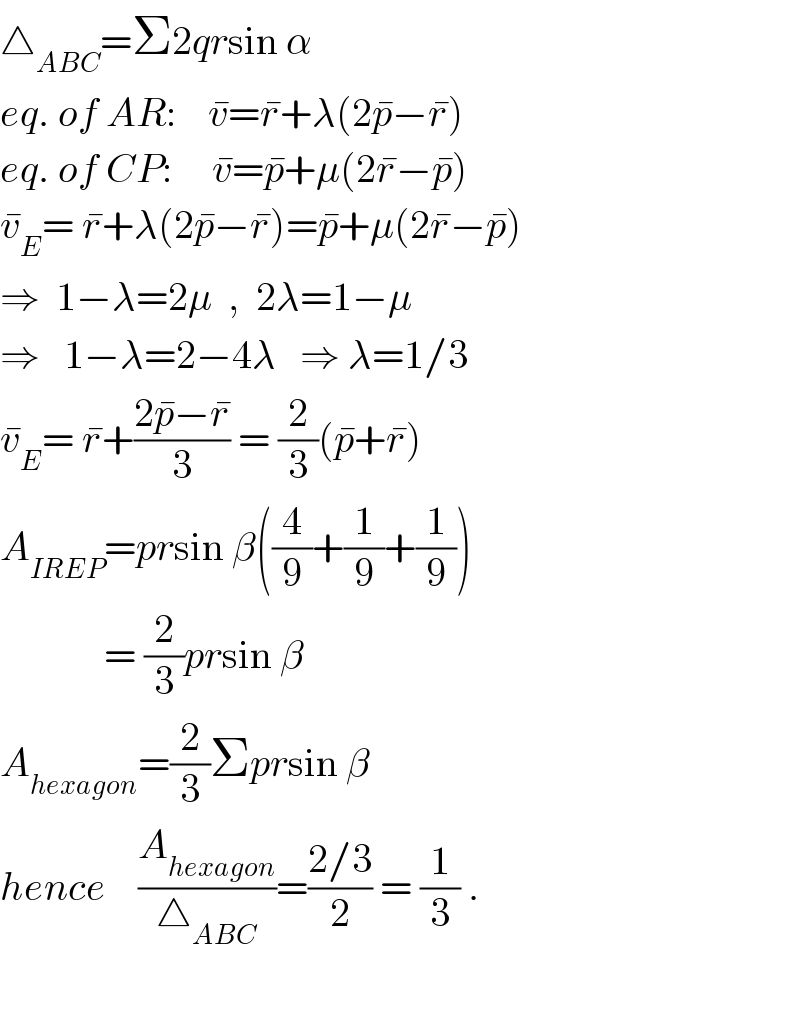
$$\bigtriangleup_{{ABC}} =\Sigma\mathrm{2}{qr}\mathrm{sin}\:\alpha \\ $$$${eq}.\:{of}\:{AR}:\:\:\:\:\bar {{v}}=\bar {{r}}+\lambda\left(\mathrm{2}\bar {{p}}−\bar {{r}}\right) \\ $$$${eq}.\:{of}\:{CP}:\:\:\:\:\:\bar {{v}}=\bar {{p}}+\mu\left(\mathrm{2}\bar {{r}}−\bar {{p}}\right) \\ $$$$\bar {{v}}_{{E}} =\:\bar {{r}}+\lambda\left(\mathrm{2}\bar {{p}}−\bar {{r}}\right)=\bar {{p}}+\mu\left(\mathrm{2}\bar {{r}}−\bar {{p}}\right) \\ $$$$\Rightarrow\:\:\mathrm{1}−\lambda=\mathrm{2}\mu\:\:,\:\:\mathrm{2}\lambda=\mathrm{1}−\mu \\ $$$$\Rightarrow\:\:\:\mathrm{1}−\lambda=\mathrm{2}−\mathrm{4}\lambda\:\:\:\Rightarrow\:\lambda=\mathrm{1}/\mathrm{3} \\ $$$$\bar {{v}}_{{E}} =\:\bar {{r}}+\frac{\mathrm{2}\bar {{p}}−\bar {{r}}}{\mathrm{3}}\:=\:\frac{\mathrm{2}}{\mathrm{3}}\left(\bar {{p}}+\bar {{r}}\right) \\ $$$${A}_{{IREP}} ={pr}\mathrm{sin}\:\beta\left(\frac{\mathrm{4}}{\mathrm{9}}+\frac{\mathrm{1}}{\mathrm{9}}+\frac{\mathrm{1}}{\mathrm{9}}\right) \\ $$$$\:\:\:\:\:\:\:\:\:\:\:\:\:=\:\frac{\mathrm{2}}{\mathrm{3}}{pr}\mathrm{sin}\:\beta \\ $$$${A}_{{hexagon}} =\frac{\mathrm{2}}{\mathrm{3}}\Sigma{pr}\mathrm{sin}\:\beta \\ $$$${hence}\:\:\:\:\frac{{A}_{{hexagon}} }{\bigtriangleup_{{ABC}} }=\frac{\mathrm{2}/\mathrm{3}}{\mathrm{2}}\:=\:\frac{\mathrm{1}}{\mathrm{3}}\:. \\ $$$$ \\ $$
Commented by mr W last updated on 07/Feb/20

$${answer}\:{is}\:{correct}! \\ $$$${it}'{s}\:{a}\:{nice}\:{vector}\:{method}\:{sir}! \\ $$
Commented by ajfour last updated on 07/Feb/20
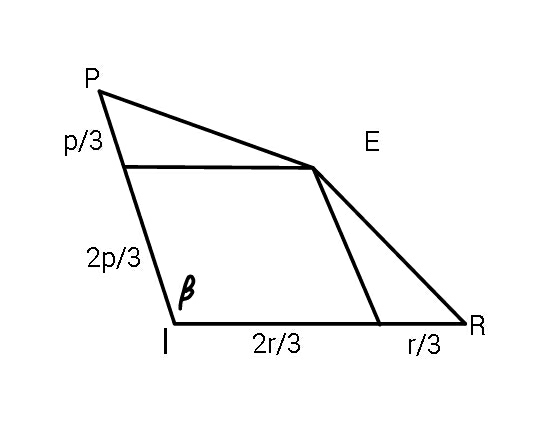
Answered by mr W last updated on 07/Feb/20
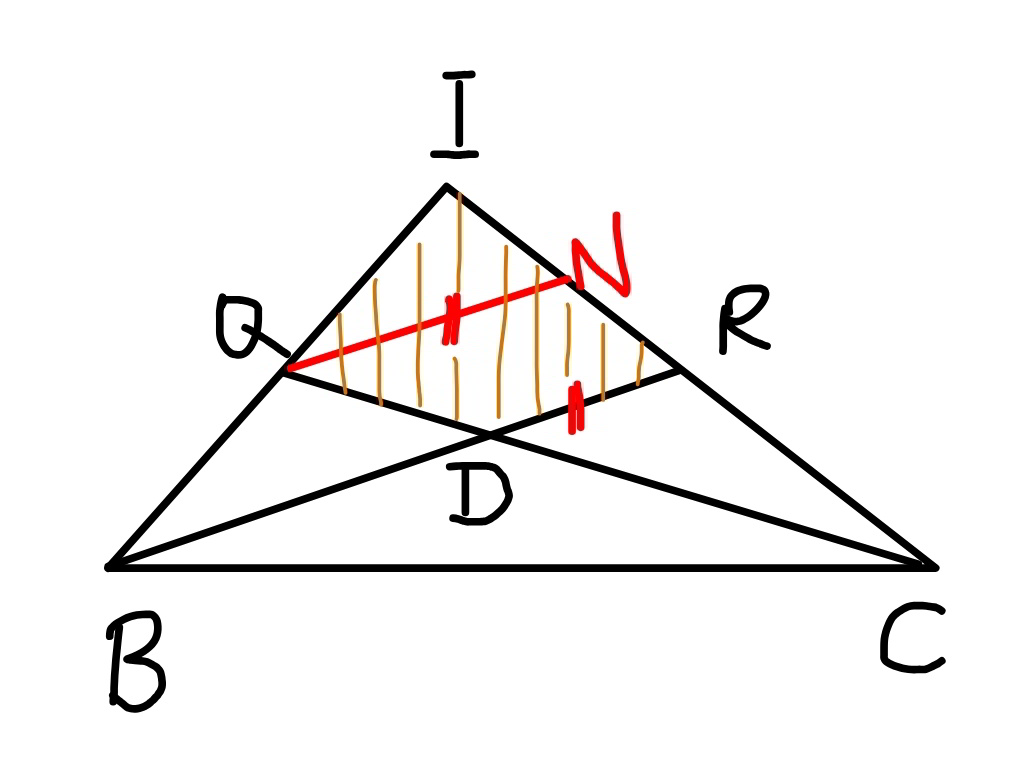
Commented by mr W last updated on 07/Feb/20
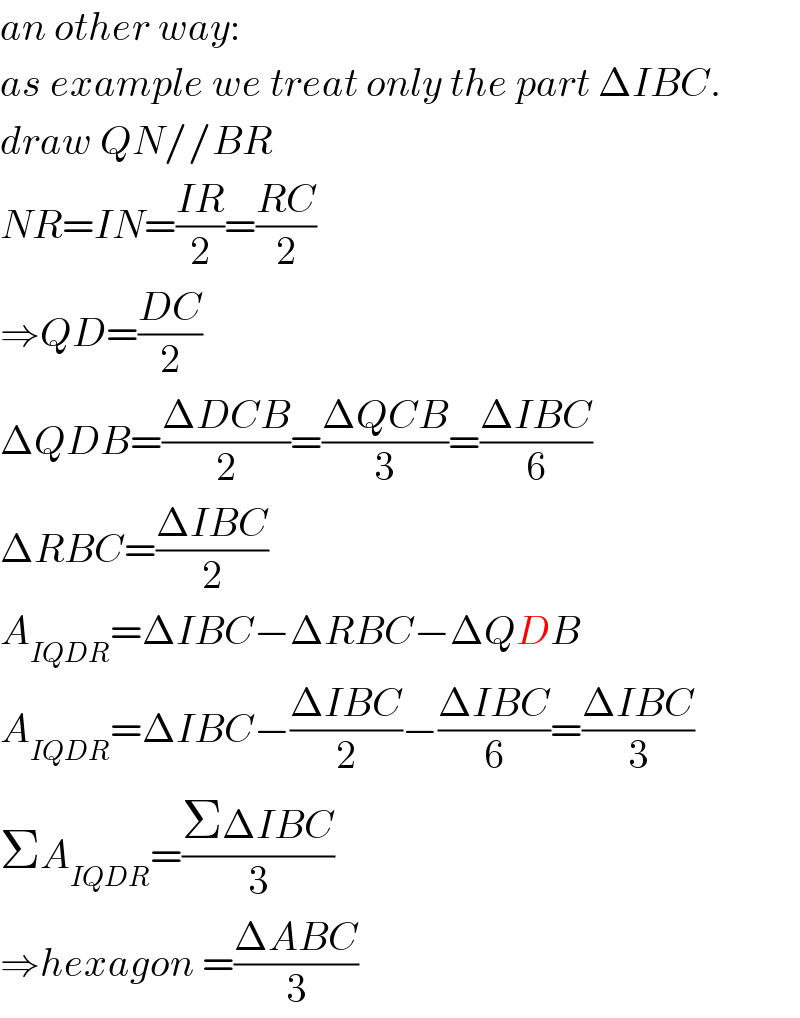
$${an}\:{other}\:{way}: \\ $$$${as}\:{example}\:{we}\:{treat}\:{only}\:{the}\:{part}\:\Delta{IBC}. \\ $$$${draw}\:{QN}//{BR} \\ $$$${NR}={IN}=\frac{{IR}}{\mathrm{2}}=\frac{{RC}}{\mathrm{2}} \\ $$$$\Rightarrow{QD}=\frac{{DC}}{\mathrm{2}} \\ $$$$\Delta{QDB}=\frac{\Delta{DCB}}{\mathrm{2}}=\frac{\Delta{QCB}}{\mathrm{3}}=\frac{\Delta{IBC}}{\mathrm{6}} \\ $$$$\Delta{RBC}=\frac{\Delta{IBC}}{\mathrm{2}} \\ $$$${A}_{{IQDR}} =\Delta{IBC}−\Delta{RBC}−\Delta{QDB} \\ $$$${A}_{{IQDR}} =\Delta{IBC}−\frac{\Delta{IBC}}{\mathrm{2}}−\frac{\Delta{IBC}}{\mathrm{6}}=\frac{\Delta{IBC}}{\mathrm{3}} \\ $$$$\Sigma{A}_{{IQDR}} =\frac{\Sigma\Delta{IBC}}{\mathrm{3}} \\ $$$$\Rightarrow{hexagon}\:=\frac{\Delta{ABC}}{\mathrm{3}} \\ $$
Commented by ajfour last updated on 07/Feb/20

$${Elementary}\:{and}\:{nice}\:{Sir}. \\ $$
